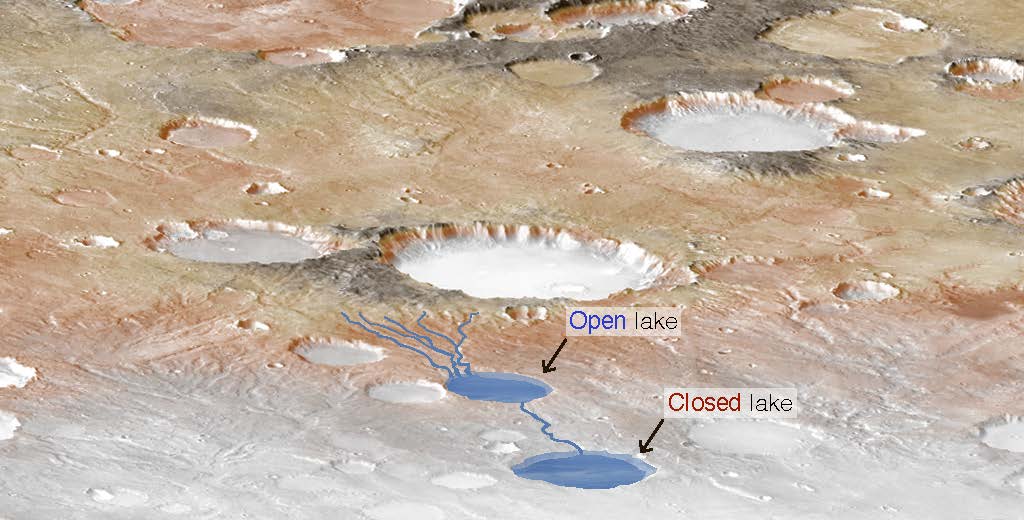Rainstorms Once Filled Martian Lakes
October 21, 2021

The ancient climate of Mars is an enigma to scientists. The existence of geologic riverbeds and lake basins paints a picture of a planet with significant rainfall or snowmelt. But computer climate models have been unable to reproduce an ancient climate with liquid water that lasts long enough to account for the observed geology.
A study led by the Jackson School of Geosciences is helping scientists piece together the ancient climate of Mars by revealing how much rainfall and snowmelt filled its lake beds and river valleys 3.5 billion to 4 billion years ago. The study was published in August 2020 in Geology and led by Gaia Stucky de Quay, a postdoctoral fellow at the Jackson School.
The researchers used satellite images and topography to figure out how much water was needed to fill lakes and their watersheds. They found that precipitation must have been between 13 to 520 feet (4 to 159 meters) in a single episode to fill the lakes and, in some cases, provide enough water to overflow and breach the lake basins.
Although the range is large, it can be used to help understand which climate models are accurate.
The next step of the research is to figure out whether the rainfall or snowmelt lasted days, years or thousands of years, Stucky de Quay said.
Back to the Newsletter